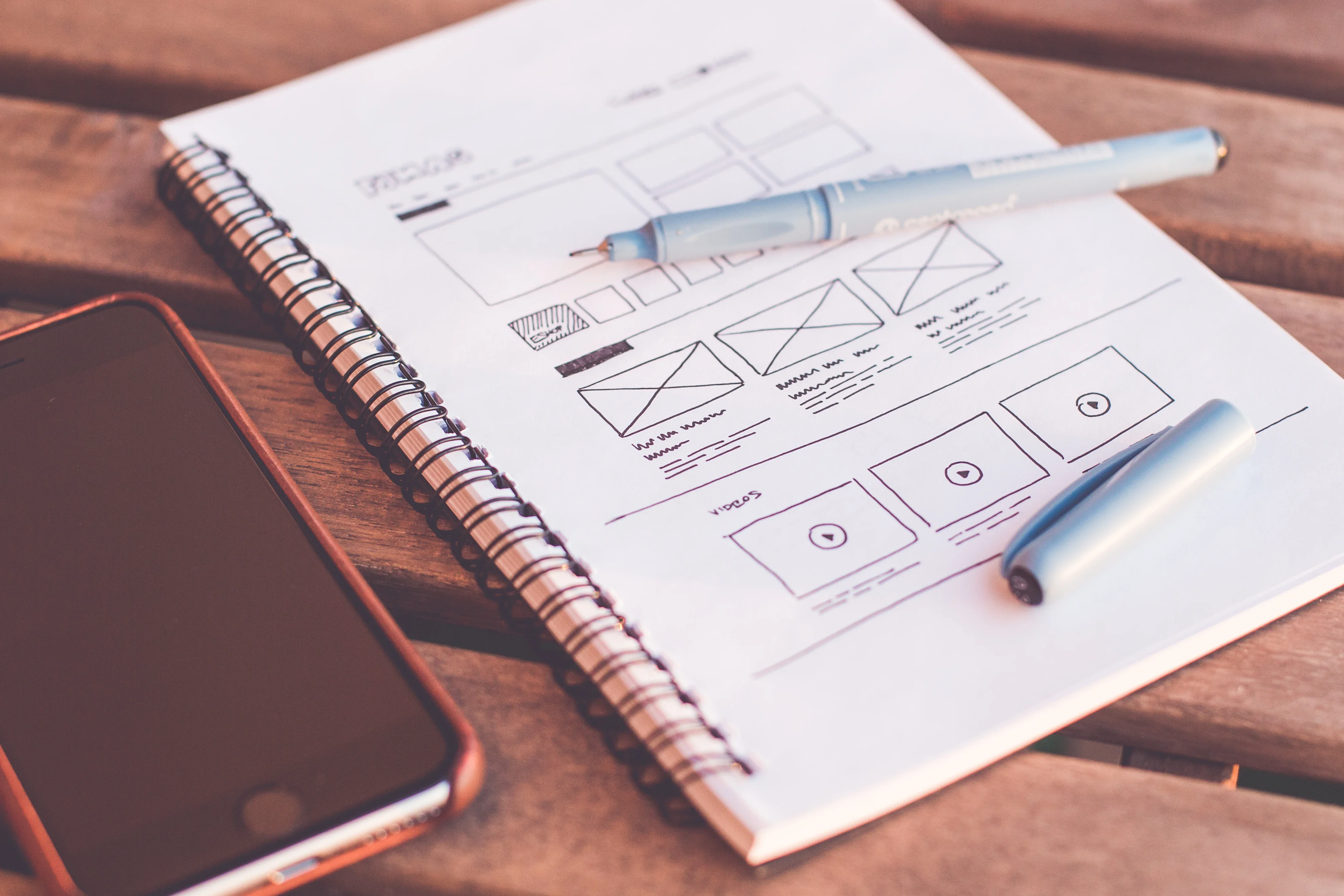Lean UX for beginners - and how to use it
In today's fast-paced and highly competitive world, companies are constantly looking for new ways to work more effectively. Agile is quickly becoming the backbone of businesses. But even when using agile methods in product design, there is still a risk of spending a lot of time developing a product that needs improvement or even a complete overhaul after release. Lean UX helps. It acts as a reinforcement in the design process and is an opportunity to create products that are both useful and usable.
In this article, you'll learn what Lean UX is and why it's essential for creating products that people love.

What is Lean UX?
To understand what Lean UX is, we first need to understand the concept of Lean. Lean is synonymous with learning. Toyota's manufacturing process inspired the Lean movement. The idea of learning as fast as possible became popular in software development in the 1980s. In 2011, Eric Ries wrote a book called "The Lean Startup", in which he applied lean thinking in the field of software to the idea of building a business.
Lean Startup is based on the idea of the build-measure-learn loop. The approach is simple: build something very quickly, measure whether or not you've created the right thing, learn from it and then iterate. The goal is to limit the time of a feedback loop to as short a time as possible.
Lean UX combines agile development methodology with lean startup approaches. Practicing Lean UX means continuously validating your design decisions with your users.
How to introduce Lean UX in your organization
If you want to apply Lean UX in your organization, there are some basic things you need to consider. Below you will find the three most important changes you need to introduce to make Lean UX work in your organization.
1. Change the way you look at things
UX design for digital devices has traditionally been task-based. Success was determined by whether the team was able to create something tangible: build a prototype, write a specification, etc. These results showed the value that UX design brings to an organization.
But if a product team wants to practice Lean UX, they should change the mindset - from "we deliver the feature" to "we created something that positively impacts user behavior". In other words, they need to put less emphasis on results and more emphasis on creating real value.
Verpdon't build anything until you know for sure that it will benefit your users
Lean UX teaches us that we shouldn't design something just because we can. When someone suggests a feature, you should focus on "why" and not "how". For example, if you are thinking about a brand new feature to be built into a product, the key question is not "How quickly can we deliver this feature?" but "Should this feature be developed right now? If we build it, will we actually solve a customer need?"
Create artifacts that are required for communication.
An artifact is used to communicate an idea to team members. A designer should create the minimum of an artifact. Sometimes this is something as simple as a sketch - if it conveys the concept, it's good enough.

2. Focus on collaboration
A shared understanding creates a foundation for Lean UX. The product team should be open to understanding the real impact on users. Shared understanding comes from collaboration. Collaboration is the backbone of Lean UX. Lean UX requires a higher level of collaboration across the team.
Create cross-functional teams where possible. The team working on a project should include developers, designers, researchers, product managers and anyone else who needs to be involved in product decisions. When people work closely together, they begin to better understand each other's needs.
Collaborative work in a cross-functional team not only brings different perspectives to the problem, but also initiates the parallel processing of tasks. This parallel processing of tasks improves efficiency and shortens the time to market.
Freedom of expression
A team should be open-minded. Each team member should be able to present their ideas on the problem being solved. The team members should discuss the idea together, and the best ideas should be collected and worked on further.
There should also be freedom of action. Team members are much more motivated to build a solution that they have developed themselves than one that someone has given them. So don't force anyone to follow a certain path, let them come up with and build their own solution.
Articulate the vision
Make sure the team is working on solving the same problem. It's not uncommon for different people to bring different perspectives, even if they think they're on the same page.
There are misunderstandings in many projects. This happens when everyone has their own solutions on how to tackle a problem.
The easiest way to solve this problem is to get your team members to visualize their thinking by sketching. Visualizing ideas reveals inconsistencies. In the end, you will develop a shared understanding of what you want to achieve.

3. Learn to think in assumptions and hypotheses
The product team should stop believing that they know exactly what they are developing. Instead, everything should be understood as a hypothesis. The hypothesis should be validated before it is developed.
Ask better questions
A hypothesis is usually created by brainstorming problems and collecting different ideas from team members. It is important to ask the right questions when generating ideas. So instead of accepting ideas without thinking, team members should ask:
- Do we really need this?
- How do we know if it is the right thing to do?
- What impact will it have on users?
- How will we measure the impact? Without clearly formulated measures, we can't tell if the decisions are good or bad.
By asking these questions, you teach team members to prepare for brainstorming sessions and develop a sophisticated hypothesis as a result. For example, instead of formulating an abstract hypothesis like
"We are building a push notification function to increase customer loyalty."
the product team will formulate something like
"We believe that push notifications are essential in our app because it helps us deliver timely updates to our users. We expect to increase user retention by 20% in three months by implementing this feature."
Confirm your hypothesis
A hypothesis is a guess. Yes, it's an educated guess, but it's still a guess that needs to be proven. Therefore, once you have formulated a hypothesis, you need to find the quickest way to validate or invalidate it.
Once a team has reached a certain level of consensus, it should focus on building an MVP (Minimum Viable Product). Along with the idea of shared understanding, the concept of a Minimum Viable Product is a core part of Lean UX. An MVP is the most basic version of the concept used for testing. For example, an MVP could be a prototype that a product team presents to its users to learn from their behavior and then iterate based on the feedback.
Remember that validation is not a one-off activity. It should be done regularly. Don't put off validation until the end of your release cycle. Do it every week. This will give you continuous valuable insights into the designs you are working on.
Conclusion
Lean UX is a fundamental process of rethinking. Some UX designers even call it a revolution. But Lean UX is not a revolution - it is an evolution. The market is changing and digital products are becoming increasingly sophisticated. The product team must be flexible and able to adapt to changes. Lean UX makes it easier to continuously evaluate whether we are doing something right and create products that people love.



